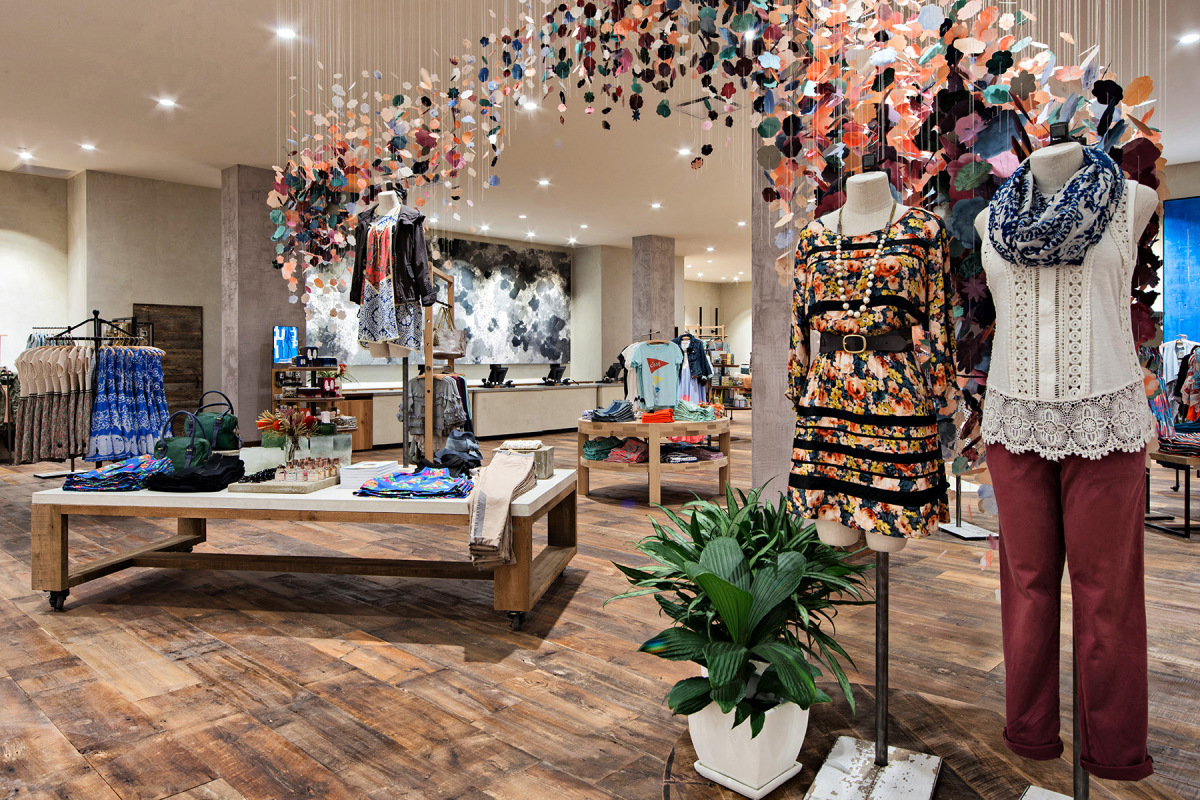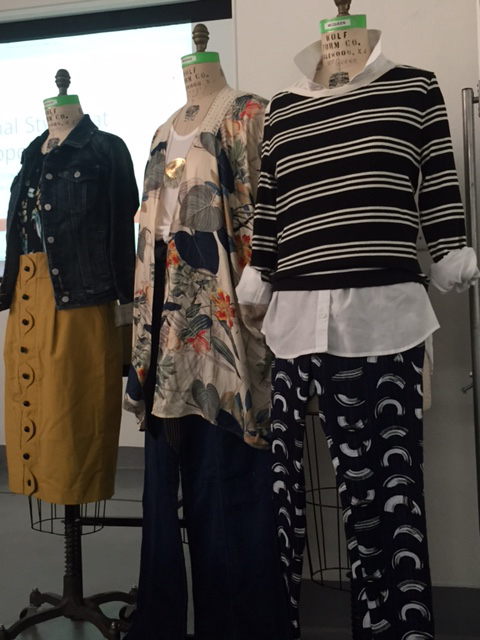
Any fashion lover should be very familiar with the store Anthropologie. As a merchandising student, my love for the company comes in the form of their extremely opulent store window displays made from everyday, recycled materials. The FSH 280 styling course was lucky enough to host guest lecturer Elena Fong. Fong is a personal shopper at Anthropologie, which means that she is somewhat of a clothing clairvoyant, she gets to know the customer then picks out pieces that she thinks they would like and fits their lifestyle.

Image courtesy: retaildesignblog.net
Fong, who started her personal styling career with the company six years ago in 2010, began working out of the Anthropologie Berkeley location. She recently made the move to Anthropologie’s flagship San Francisco store, one of the highest volume and highest grossing stores out of the chain. In her hour-long presentation, Fong gave insight into the life of a personal shopper and what it takes to be successful at the craft. Decked out in a tapestry-esque kimono, Fong looked every bit the part of an Anthro employee. This is something that is very important as she stated the customers tend to look to the merchandising and employees for inspiration on how they would like to dress. Coincidentally FSH 280 instructor Danielle Wallis is an Anthro alumni, having worked in visual merchandising at the Soho New York store during her college years. Between the two women it is clear that there is definitely an “Anthro twist” as Fong likes to put it. Both of the women exuded a sense of whimsy in their outfit choices and radiated warmth in their personalities.
The presentation was kicked off with an interactive style assessment. Students were encouraged to fill out a two-page questionnaire, which would narrow their style down to fit in with the three categories of styles that Anthropologie caters to. Within just a few minutes students deciphered whether they fit into the preppy/classic, feminine or boho classification. The questionnaire is the starting point for Fong when meeting with a new customer. Every shopper tends to identify with one of these core aesthetics, although certain people blend the lines fitting into multiple categories.

Fong then proceeded to explain the different kinds of customers that shop at Anthropologie, from the browser to the regular customer, the special occasion shopper to the mom shopper who is overwhelmed and needs as much help as possible. Anyone who has worked retail knows that these are staple customer prototypes for any and every store.
How do you cater to such a diverse range of clients? Here are a few top tips from Elena Fong:
- Know your customer: get insight into what her typical day is like. Also pay attention to the clothing they come into the store wearing, since this is obviously something they feel comfortable in.
- Engage and relate to the customer: Be empathetic to their lifestyle, try to put yourself in their shoes. Also try to find some way to relate to her, whether it is about what kind of food you both might like or a movie you both might have seen, it is ultimately about establishing a relationship so they will want to come back.
- More is better than less: When pulling items for a client bring as many things as possible, having too many options is better than not having enough.
- Create and give tips on how to put together a whole look, from shoes to undergarments, all the way down to hair and makeup styling tips. It is important to give every bit of knowledge so that the customer can feel 100% confident when executing a look.
- When a customer tries on a piece of clothing let them react to it before you jump in with opinions: Don’t jump in immediately and say “I love this,” because ultimately it is about what the customer likes, not what the stylist likes.
- Lastly, be honest with customers. It shouldn’t always be about pushing products or sales. Genuine connections and honesty is what will bring customers back.
Being a stylist ultimately comes down to a few characteristics. You must have the basic knowledge of silhouettes and what looks good on certain body types. You need to know what pieces look good together, which all has to do with taste and your ability to envision an outfit that fits within the customer’s personality. You need to have a somewhat “go with the flow” attitude, as Fong put it. You need to be a quick thinker for any unexpected question that a client throws your way. Networking is also a huge part of styling, and of most jobs in general.

The last tip that Fong left the students with was to build a relationship with neighbors in your community. She explained that Anthropologie holds farmers markets with local vendors to bring in customers but also to encourage locally made items.
There is no doubt that Anthropologie has honed in on a specific niche. Their brand identity is quirky, whimsical, globally inspired with a modern edge. They understand their customers, their product offerings and most important of all, they understand who they are—which is something that we can all learn from. Even if you’re not aspiring to be a personal stylist, I hope that Fong’s insights are helpful since patience, honesty and a congenial attitude go a long way in ensuring success for anyone in any field.
Written by Samantha Rathman



